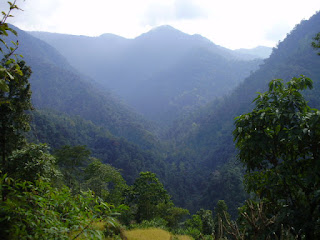Monday, 28 November 2011
Wednesday, 2 November 2011
Jhusing Tribal Village (Limboo Community)
Jhusing
Tribal Village
Jhusing, A ethnic Tribal village is situated in extreme east
in the Lingsey Gram Panchayat, Kalimpong II North Bengal and its border extends
to the forest and Wild Life Jungle of upper Neora valley National Park with the
household of 30 houses. It is almost ethnic and total Limboo tribal Village.
The village is very isolated by the means of transport, Education, Health and
sanitary by the concern Govt. and the Region extremely backward and very deprived.
Traditionally, the inhabitants of this area have been the indigenous Limboo and
Rai Ethnic group.
The Limboo and Rai jointly known as Kirants and now a days especially
Limboo are the follower of Yuma, Limboo Goddess and literally the religion as
Yumaism or Youmasam.
Culture:
Being a tribal community the culture is also very ethnic. The
cultural identity of this community starts with hunting and gathering the fruit
from the jungle and use to shelter in the caves. Slowly they leave their jungle
life and settle in the society. But the method worshiping their god, marriage
practices, funeral and death culture are very different. Most of them are non
vegetarian. Worshiping Programmes are perform by the guidance of tribal Priest
called ‘yaaba’ or ‘Fedangba’. Different auspicious occasion or even in Death
Occasion they use to take ‘janr’ a locally made Millet Wine with Flesh (Meat).
More over the Tribal of Jhusing Village still follow their typical tradition
and Culture and that is their original Identity.
Alternative Livelihood:
Some of the aware people from the village and adjoining area
start the rural tourism. I this context, village itself situated in the
beautiful location beneath the Neora Valley National park having longest
waterfalls, jungle camping site, Herbal
garden and rich in flora and fauna. Interesting place for the nature lover
covering the Bird watching, Butterfly Watching and Trekking Trails. I would be
great fortune for the Tribal people of the Jhusing, that community based
tourism getting more important in the Tourism market. Some of the agency is
vary much interested to promote this community as well as the natural resources
in the greatest height of tourism Industry. Aware youth from this community
also paying attention in the rural tourism. If the tourism flourish in these
places, village life will be more comfortable, worth living and more generation
of employment with strong economic background.
Neora valley National Park
Neora valley National Park Neora Valley National Park lies in the civil district of Darjeeling, West Bengal, which is situated between the 26º 52' 3" and 27º 7' 35" North latitude and 80º 45' to 80º 55 East longitude. It is contiguous with Sikkim and Bhutan at its northern and north-eastern boundaries respectively. The southern boundaries of the park are adjoining to Jalpaiguri district. The altitude varies from 183 m to 3200 m, the highest point being near Sikkim border in the North.
Neora Valley Nature Reserve is one of the last remaining pristine ecosystems of the Eastern Himalaya with its amazing bio-diversity, and is home to many rare and endangered, plants, animals and birds. Trek in an area rich in natural history and beautiful views this is just the trek for you. For birdwatchers this trek is attractive during the spring months of March to June.
Neora Valley Nature Reserve is one of the last remaining pristine ecosystems of the Eastern Himalaya with its amazing bio-diversity, and is home to many rare and endangered, plants, animals and birds. Trek in an area rich in natural history and beautiful views this is just the trek for you. For birdwatchers this trek is attractive during the spring months of March to June.
Neora Valley National Park is also the home of Red Panda. A cute little animal with reddish brown body and a bushy ringed tail is one of the most endangered species in the world. The recent discovery of Royal Bengal Tiger in Neora Valley has prompted the administration to include the park in the list of sensitive wildlife zones in the country. According to the 2002 tiger census the park holds 19 majestic big cats. Among the other important mammals Indian Gaur, Himalayan Black Bear, Clouded Leopard Common Leopard, Lesser Cats, Himalayan Thar, Sparrow, Gorals, Deer and Squirrels are worth mentioning.
Due to its altitudinal variation ranging from 600ft to 10600 ft, various species of birds make the park a paradise for the bird watchers. Pheasants, Cuckoos, Flycatchers, Maynas, Orioles, Owls, Parakeets, Partridges, Sunbirds, Swallows, Swifts and Woodpeckers would captivate one with their chirpy calls and enchanting colorful plumage display.
Subscribe to:
Comments (Atom)







